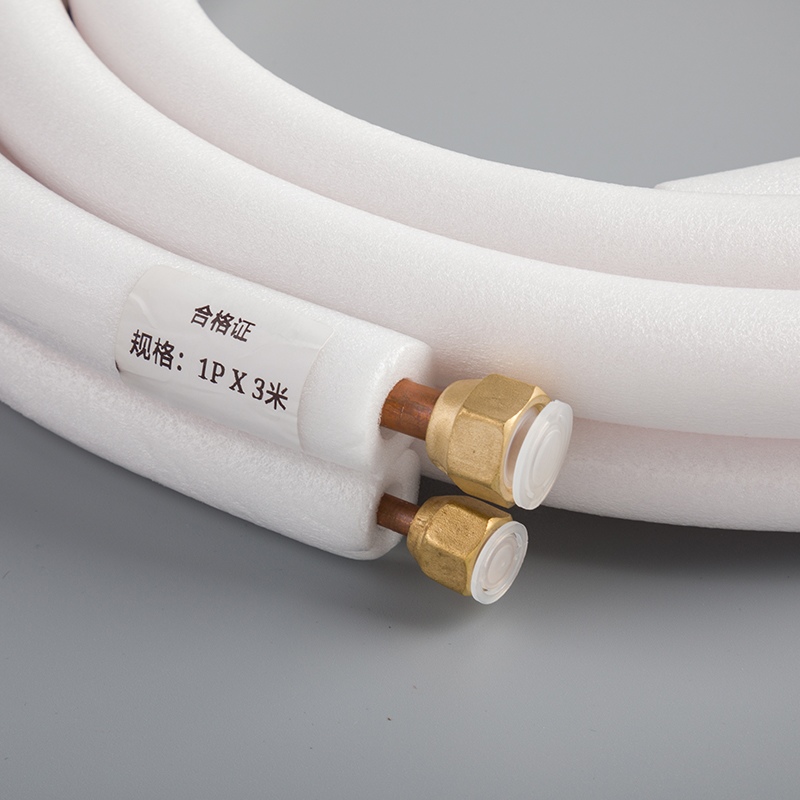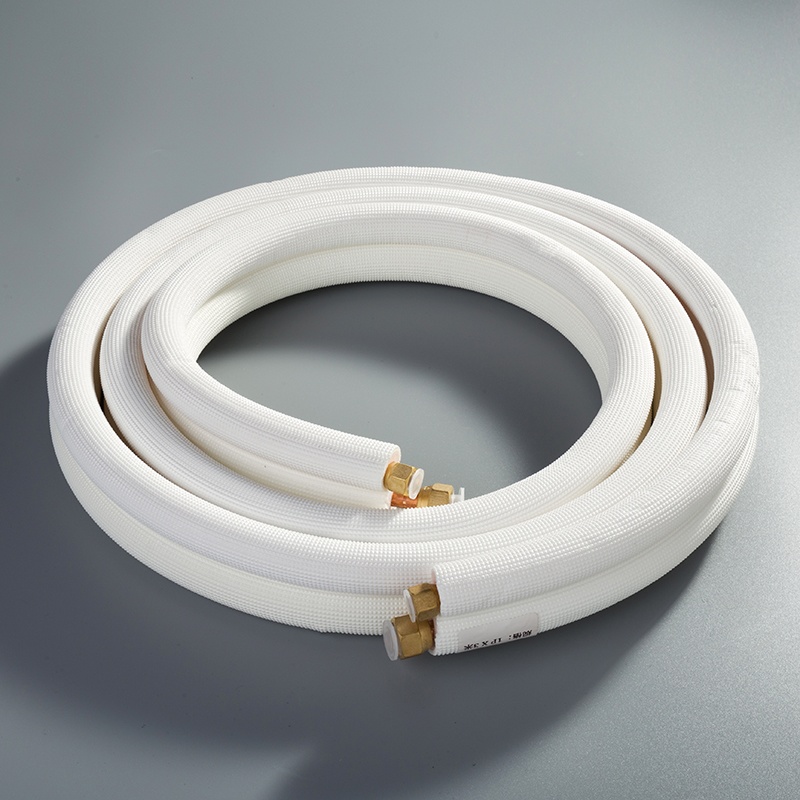How to Fix an Air Conditioner When the Copper Pipe Isn't Cold

When your air conditioner copper pipe is not cold, it indicates a problem with the system. This often leads to the unit blowing hot air instead of effectively cooling your space. It’s important to identify the cause promptly to restore your air conditioner’s performance and avoid further damage to the system.
Key Takeaways
Always switch off the power before fixing your AC. This keeps you safe and avoids electric shocks.
Check air filters often and replace dirty ones. Clean filters help airflow and keep your AC working well.
If airflow is weak or you hear strange sounds, call an expert. This stops more damage to your AC.
Safety Precautions for Troubleshooting

Turn Off the Power
Before you begin troubleshooting your air conditioning system, always disconnect the power. This step prevents electrical shocks and ensures your safety while working on the unit. Locate the power switch near the outdoor condenser or turn off the circuit breaker connected to the AC. Double-check that the system is completely off before proceeding. Working with live electricity can be dangerous, so never skip this precaution.
Handle Refrigerants Safely
Refrigerants play a crucial role in your air conditioning system, but they can be hazardous if mishandled. Always wear protective gear, such as gloves and safety goggles, when dealing with refrigerants. Avoid inhaling the chemicals, as they can cause health issues. If you suspect a refrigerant leak, contact a professional immediately. Working with a buddy is also a good idea. They can assist you in spotting potential hazards and provide help in case of an emergency.
Use Proper Tools and Gear
Using the right tools ensures safe and effective troubleshooting. Equip yourself with a multimeter to check electrical connections and a vacuum pump if refrigerant handling is necessary. Wear protective clothing to shield yourself from sharp edges or hot components. Regular breaks are essential, especially when working in warm environments. Recognizing signs of heat-related illnesses, such as dizziness or fatigue, can prevent accidents. Proper preparation keeps you safe and helps maintain the cooling efficiency of your AC system.
Common Causes of an Air Conditioner Copper Pipe Not Cold

Low Refrigerant Levels
Low refrigerant levels are one of the most common air conditioning problems. When the refrigerant is insufficient, your air conditioner copper pipe may stop cooling effectively. Signs of this issue include warm air coming from the vents, ice forming on the copper pipes, or unusual noises like hissing or bubbling. Low refrigerant levels force the system to run longer cycles, increasing energy bills and risking damage to the compressor. If you notice these signs, avoid attempting to refill the refrigerant yourself. Handling refrigerants requires professional expertise to ensure safety and compliance with regulations.
Dirty or Blocked Air Filters
Dirty air filters can restrict airflow, causing your air conditioning system to work harder. This reduces its efficiency and may result in the copper pipe not cooling as expected. A clogged filter can also lead to inadequate cooling, making it difficult to maintain a comfortable indoor temperature. To prevent this, check your filters regularly and replace them when necessary. Clean filters improve airflow and help your AC function optimally.
Faulty Compressor
The compressor is the heart of your air conditioning system. If it malfunctions, the copper pipe may not get cold. Common causes of compressor failure include low refrigerant levels, inadequate lubrication, or dirt and debris in the outdoor unit. A faulty compressor can lead to overheating or reduced cooling capacity. Addressing this issue often requires professional repair or replacement to restore your system’s performance.
Blocked or Dirty Condenser Coils
Condenser coils release heat absorbed from your home. When these coils become dirty or blocked, the system struggles to cool effectively. This can cause the copper pipe to remain warm. Regular cleaning of the outdoor unit can prevent debris buildup and ensure proper heat exchange. Keeping the area around the condenser clear of obstructions also helps maintain efficiency.
Thermostat Issues
A malfunctioning thermostat can disrupt the cooling process, leading to a non-cold copper pipe. If the thermostat fails to communicate the correct temperature settings to the system, the AC may not cool properly. Check the thermostat settings and replace the batteries if needed. If the problem persists, consider upgrading to a programmable or smart thermostat for better control and efficiency.
When to Call a Professional for Air Conditioning Repairs
Signs the Issue Requires Expert Help
Some air conditioning problems require professional assistance to ensure safety and proper repairs. Look out for these signs:
Weak or no airflow from the vents.
Unusual sounds, such as grinding or banging, coming from the unit.
Unpleasant odors circulating through your home.
Sudden spikes in energy bills without increased usage.
Weak airflow often points to clogged filters or blocked ducts, which can compromise comfort and safety. Strange noises may indicate mechanical issues, while foul odors could signal contaminants or mold in the system. If your energy bills rise unexpectedly, it might mean your AC is working inefficiently and needs expert evaluation.
Handling Refrigerant Safely
Refrigerants are essential for cooling, but mishandling them can be dangerous. Without proper training, you risk frostbite or sight impairment due to their low boiling points. Some refrigerants can irritate your skin or cause respiratory problems. Others are highly flammable, increasing the chance of accidents. Improper handling also harms the environment, as refrigerants can contribute to ozone depletion. Always contact an air conditioning repair service to handle refrigerants safely and responsibly.
Deciding Between Repair and Replacement
When deciding whether to repair or replace your AC, consider these factors:
Age of the system: Replace units older than 10 years.
Repair costs: If repair costs exceed $5,000 multiplied by the unit's age, replacement is better.
Safety concerns: Replace the system if it poses safety risks.
Energy efficiency: Newer models reduce energy costs and improve performance.
Frequency of repairs: Frequent breakdowns suggest it’s time for a new unit.
Cooling performance: If the system struggles to cool effectively, consider upgrading.
Modern air conditioning systems offer advanced features, better efficiency, and eco-friendly options. Replacing an outdated unit can enhance comfort and lower utility bills.
Fixing a non-cold copper pipe starts with identifying the root cause. Check for issues like low refrigerant, dirty filters, or a faulty compressor. Regular AC maintenance can prevent these problems. Clean air filters monthly, inspect refrigerant lines, and schedule annual servicing before the cooling season. For complex repairs, always consult a professional to ensure safety and efficiency.
FAQ
What should you do if your AC copper pipe freezes?
Turn off the AC immediately to prevent damage. Check for dirty filters or low refrigerant levels. If unsure, contact a professional for assistance.
How often should you clean or replace air filters?
Clean or replace air filters every 1-3 months. Regular maintenance improves airflow and ensures your air conditioning system works efficiently.
Can you fix low refrigerant levels yourself?
No, you should not attempt to fix low refrigerant levels. Handling refrigerants requires professional expertise to ensure safety and compliance with environmental regulations.
See Also
Transforming Air Conditioning With Innovative Copper Pipe Solutions
Enhance Air Conditioner Performance Using Copper Pipe Insulation Tips
Simple Steps to Repair a Broken Copper Pipe Yourself


